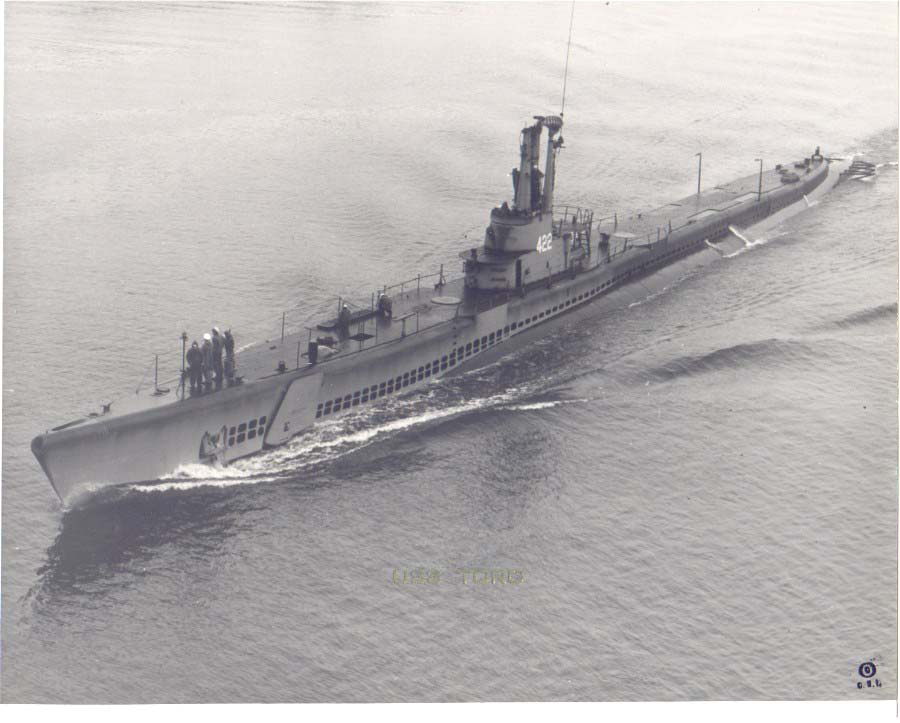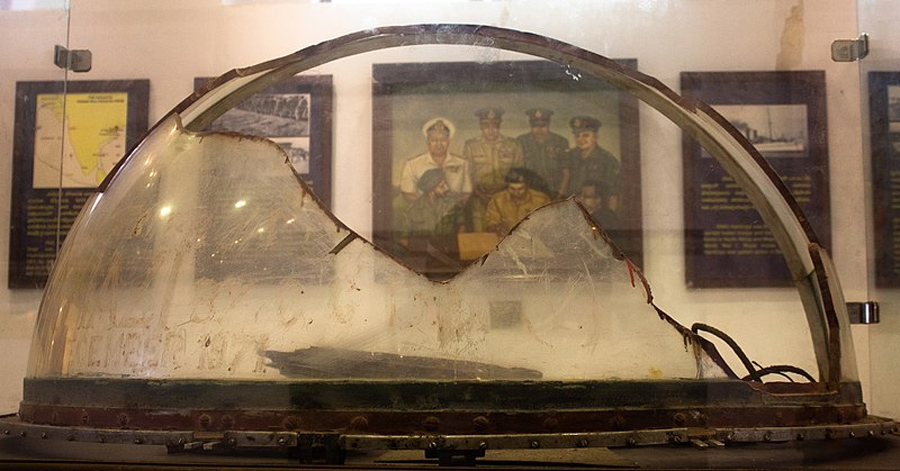Military submarines are possibly the most advanced technology mankind has ever developed. From their first real military application in the United States Civil War, their ability to approach by stealth and attack their target without warning makes them a deadly addition to any navy.
However, they also operate in some of the most difficult environments on the planet, and when something goes wrong it can often become catastrophic for the crew. Should something go wrong, it can often be extremely challenging for investigators to locate the wreck and ascertain what, exactly, happened.
So, when in early December 1971 something happened to the Pakistani fast attack submarine “Ghazi”, the investigation teams were faced with an almost insurmountable challenge. These vessels operate out of sight, and whatever happened also occurred out of sight.
So, what do we know about that fateful day?
The PNS Ghazi
Launched in 1944, the Ghazi was originally built and operated by the US navy during the Second World War, one of 29 “Tench” class submarines. She was originally named the USS Diablo, and was designed as a long-range, fast-attack vessel.
After the war she continued in active service with the US Navy until the early 1960s. At that point the ageing submarine was considered surplus to requirements and was offered to other countries, being leased by the Pakistani navy in 1963, for an initial four year period.
Joining the Pakistan armed forces the next year, she almost immediately saw military action during the rising tensions between India and Pakistan. Since the hugely destructive partition of British India in 1947, forced on the population by the British Empire, India and Pakistan have engaged each other militarily on many occasions with tensions lasting to this day.
Ghazi was invaluable to Pakistan in these engagements, seeing action in 1965 and again in 1971. She was also well seasoned in oceanic travel, and due to the closure of the Suez Canal in 1968 she travelled underwater around the southern horn of Africa and up into southern Europe, to be refitted and modernized in Turkey.

After the refit Ghazi was a formidable weapon of war. She could carry up to 28 modern torpedoes and could now also lay naval mines, allowing her to blockade enemy ports. Ghazi was considered the pride of the Pakistan navy, the only submarine on either side, and served as her flagship.
- Project Azorian: Did Howard Hughes Try to Steal a Russian Sub?
- Operation Pastorius: Hitler’s Attempt to Blow Up America
However, everything came to a sudden end on 4 December 1971. While operating in the Bay of Bengal during the Indo-Pakistani war the Ghazi suddenly sank. What happened to her remains a mystery to this day.
So What Happened?
Ghazi was operating far from home when she was reported missing. The Bay of Bengal is on the far side of the Indian subcontinent from Pakistan and Ghazi had to travel some 3,000 miles (4,830 km) to reach her destination.
She was apparently charged with two objectives as part of her mission. The first was to mine the area around the port of Visakhapatnam, the only major port in the area and vital to the Indian war effort and peacetime commerce. To gain a stranglehold over shipping operating from this port would give Pakistan a decisive strategic advantage, and Ghazi was to complete this mission at all costs.
The second aspect of her mission was to locate and hunt down the INS Vikrant, the only aircraft carrier in the conflict and the pride of the Indian navy. The Vikrant’s ability to launch long range strikes against both air and land targets made her a major threat to Pakistan, one which could not be allowed to continue.
On the 16th of November, she made contact with the Pakistan navy operations HQ and gave her position as some 250 miles (400 km) off the coast of Mumbai, on India’s west coast. Four days later on November 20, 1971, she sailed into the Bay of Bengal.
Around this time she unsealed her orders and the search for Vikrant began on November 23rd. Ghazi had intelligence that the Indian aircraft carrier was stationed in Madras, but when she arrived Ghazi discovered that the Vikrant had departed some ten days earlier, and was now somewhere around the Andaman Islands.
Uncertain of their ability to find their quarry in the open ocean, Ghazi’s commanders returned to Visakhapatnam to begin laying mines off the harbor. They hoped to catch Vikrant once she had returned closer to an Indian port, and in the meantime they could complete the other, vital aspect of their mission. It was also an opportune moment to mine the harbor, as many Indian naval ships were at anchor there and would be trapped.

But she would never complete her mission. Ghazi sank off the coast of Visakhapatnam on the night of 4–5 December 1971, killing the 11 officers and 83 enlisted men on board.
Different Stories
Both India and Pakistan conducted an investigation into the loss of Ghazi, and both reached very different conclusions. The two countries remain divided as to what happened to this day.
The Indian Navy concluded that Ghazi was targeted and sunk by the destroyer INS Rajput, and in fact that the Indian navy had been on the lookout for Ghazi for some time. According to their version of events, they had intercepted a communication which asked for a specific type of oil, one only used by submarines. And there were no other submarines than Ghazi.
On alert and believing Ghazi to be in the Bay of Bengal, the captain of Rajput was tasked with hunting down the submarine. Having spotted a disturbance on the surface, the warship launched depth charges and reported hearing loud underwater explosions, confirming the destruction of the sub.
According to the Indian account, the submarine was undertaking an emergency dive to escape the warship when she was hit, accelerating her downward progress. The Indian navy then designated the site a military grave and sent a rescue ship to look for survivors.
However, the Pakistani authorities were unsatisfied with this explanation, which gave considerable glory to the Indian navy. At first, they refused to accept that the submarine had been destroyed at all.
Only in February of the following year did they formally recognize the loss of their submarine, but their conclusion as to what happened was markedly different. Pakistan believed that an accident onboard had led to the loss of Ghazi.
Submarines, as noted before, are extremely complex machines and Ghazi was by this point over 25 years old. She carried many things designed to violently explode, and much of the equipment which allowed her to operate under the waves could also lead to catastrophic damage.

Pakistan concluded that an internal explosion had occurred, either due to hydrogen gas during the recharging of the submarine’s electric batteries which provided power when underwater, or through an accident with a torpedo and a mine. One other possibility was offered by their investigative team: the torpedoes that she carried could sometimes run in a large underwater circle once fired, and Ghazi herself may have fired the torpedo that killed her.
The Truth
What happened aboard Ghazi will never the known, but some conclusions can still be drawn. The Indian account, whereby heroic Indian sailors engaged and destroyed the pride of the Pakistani fleet, paints a picture of the Indian navy as superior.
The Pakistani account on the other hand, where their own failures in maintenance or operation led to the loss of the submarine, is a humiliating admission. Of the two therefore the explanation made by Pakistan seems the more likely: if it were not true they would not admit to something which suggests they were at fault.
In 2003, Indian divers reached the wreck of the Ghazi on the sea floor. There, they saw damage consistent with an internal explosion, and while it is still possible that this could come from an Indian attack (with say depth charges triggering a mine onboard), this does lend weight to the Pakistani explanation.
Ultimately, Ghazi was lost due to the war between the two countries. Whether due to faulty equipment or an Indian attack, her loss was deeply felt by the families of the 93 men aboard.
Top Image: PNS Ghazi shortly before being received into the Pakistani navy in 1964. Source: Tomme J. Lambertson / Public Domain.
By Bipin Dimri